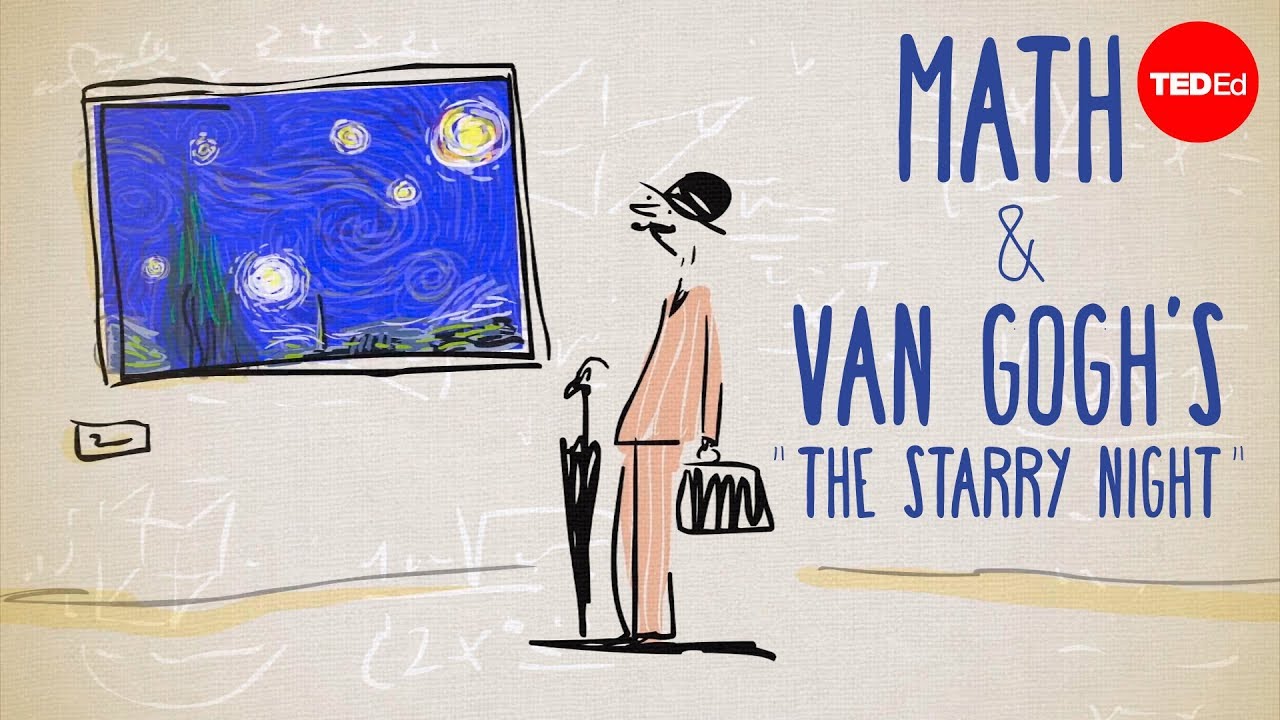Check out our Patreon page: https://www.patreon.com/teded
View full lesson: http://ed.ted.com/lessons/the-unexpected-math-behind-van-gogh-s-starry-night-natalya-st-clair
Physicist Werner Heisenberg said, “When I meet God, I am going to ask him two questions: why relativity? And why turbulence? I really believe he will have an answer for the first.” As difficult as turbulence is to understand mathematically, we can use art to depict the way it looks. Natalya St. Clair illustrates how Van Gogh captured this deep mystery of movement, fluid and light in his work.
Lesson by Natalya St. Clair, animation by Avi Ofer.
source

I think he was tripping balls when he drew that
Van Gogh didn't paint 'The screem'.. it's by Edvard Munch
Van Gogh is my favorite artist … his paintings not only captured the time and space of the eternal moment, but the energy as well … this is most apparent in The Starry Night … and is what gives life and meaning to his beautiful works … Thank you Vincent !!!
Now I understand what you tried to say to me
How you suffered for your sanity
How you tried to set them free
They would not listen, they did not know how
Perhaps they listen now
Indonesian subtitle plis 🙂
Artists have to be physicists without the knowledge of one. Some learn to draw straight lines and circles free hand. You need to do realistic perspectives without any math or measuring. You need to do colour without knowing the properties of light. How can a non-scientist brain recreate the laws of reality. It's because our brain is a scientist. Every time we take a step, our brain must measure the distance from your foot to the ground. We just don't have access to this marvelous calculator. But through art we can. We are part of nature and we must be able to understand it to live with it. The greatest artists will have access this primal computer. That's how Van Gogh understood Turbulence, the biggest mystery in physics, before it was even thought of in the academic sciences.
i love him more and more
I think they are looking too far into things.
Van Gogh was expressionist not impressionist
This video made my head and eyes hurt 🤦♀️
Pourquoi le titre est en français et la video est en anglais? ????
Van Gogh was definitely not a flat earther 🤯
This is just an assumption. People should visit Arles in France to see the lights that inspired van gogh
His friend artist Cut his ear when they were in a fight. Van Gogh did not cut it himself. He also ate his own lead paint, so his behavior should be questioned!
Ya know I draw these ‘turbulent’ lines all the time which is why I love Van Gogh and his most recognizable painting “ the starry night “ I draw these however because to me it expresses how my mind is , it’s messy but a neat messy, lines going everywhere, the flow never stopping
TED-Ed Ed Ed: The actual name of the work is "The Starry Night".
5 thirds power of r….huh?
I have visual impairments that cause me to see flowing type of kaleidoscopes similar to Van Gogh’s swirls. I wish I could paint them like he did. I wonder if he could have had a bit of neural path damage along with psychiatric symptoms.
The mind of a tortured genius 🌫️🌪️
Van Gogh‘s mind was too beautiful for this world.
i think it’s not okay to romanticize mental illness. when someone is depressed or dealing with anxiety they don’t become some magical creatures capable of greater things, they’re just suffering. that may put things in perspective and make you appreciate the good moments, the small things, he said in his letters that he found peace in looking at the stars, that’s beautiful and that’s why he created such a delicate painting yet full of love and passion, but let’s not act like his internal struggle made him a better artist, that’s not it, we’re talking about an actual person who ended up killing himself, i’m sure his pain was no god given miracle
A link on how to pronounce Vincent Van Gogh in Dutch:
https://youtu.be/Ceo7E1R78yo